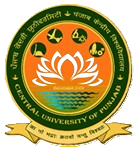About
About the Central University of Punjab
The Central University of Punjab, Bathinda (CUPB) was established in 2009, along with 12 other Central Universities, by an Act of Parliament (No. 25 of 2009). The university's mission is to provide various instructional and research facilities across integrated and cross-disciplines, promote teaching, learning, and research innovation, and cross-pollinate new ideas, technologies, and world-views. Its aim is to create a responsive workforce that is aware of regional, national, and global needs and is in tune with academia, industry, and business requirements. The university has state-of-the-art infrastructural facilities, including a Central Instrumentation Laboratory, Computer Centre, and University Library, offering high-end facilities to its faculty and students. Air-conditioned lecture rooms, well-equipped science laboratories, a 90-seater seminar hall, and a 250-seater air-conditioned auditorium support academic activities. The university will soon shift to its main campus.
About the Malaviya Mission Teacher Training Centre
The National Education Policy (NEP) 2020 in India aims to improve the skills of faculty members in higher education. The UGC-Human Resource Development Centres (HRDCs) and Pandit Madan Mohan Malaviya National Mission on Teachers and Teaching Centers (PMMMNMTT) have helped to train faculty members. However, there is still a need for continuous professional development in all areas of teaching and learning.
To address this, the Malaviya Mission has been proposed. The mission intends to restructure and improve the training of teachers in higher education, aligning with NEP 2020's vision within three years, using multiple training centres. The expected outcome is to transform higher education in terms of Indian values, teaching methods, research, publications, patents, and institutional development.
NEP 2020 is a significant moment in Indian education policy, focusing on making teaching learner-centred and incorporating continuous, comprehensive learner assessment. Capacity building of faculty members is a crucial aspect, and HRDCs have been conducting Continuous Professional Development Programs (CPDP) covering various areas like faculty induction, pedagogy, domain knowledge, and leadership.
The Malaviya Mission aims to strengthen faculty roles, promote learner-centred teaching, and implement NEP 2020's recommendations. It will integrate HRDCs and PMMMNMTT centres and rename the entire effort as the Malaviya Mission-Teacher Training Programme (MM-TTP), with 111 institutions known as Malaviya Mission Teacher Training Centres (MMTTC).
The new phase of the scheme focuses on improving teaching quality, promoting equity and inclusion in higher education, encouraging online and digital education, emphasizing Indian language and culture, developing infrastructure, promoting gender sensitization, introducing vocational education, and nurturing leadership and management skills. The Malaviya Mission also aims to foster research and multidisciplinary education. Implementing new teaching and assessment approaches outlined in NEP 2020 will be facilitated through the Malaviya Mission and MMTT Centers.
The vision of the Malaviya Mission is to equip faculty members with competencies for better teaching, learning, and research by incorporating Indian values, updating their knowledge and skills, and aligning education with the needs of society and NEP 2020.
